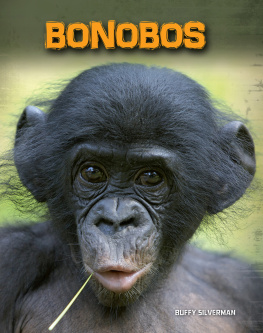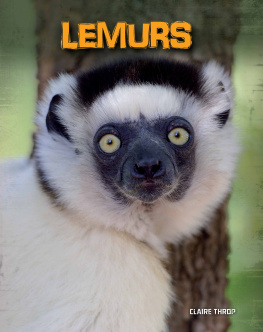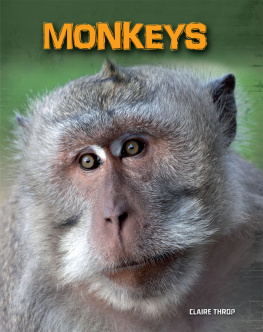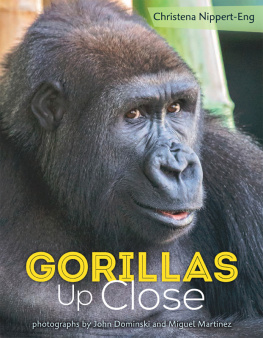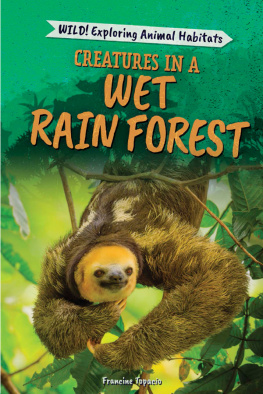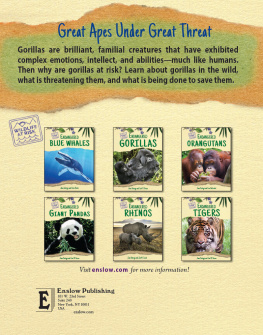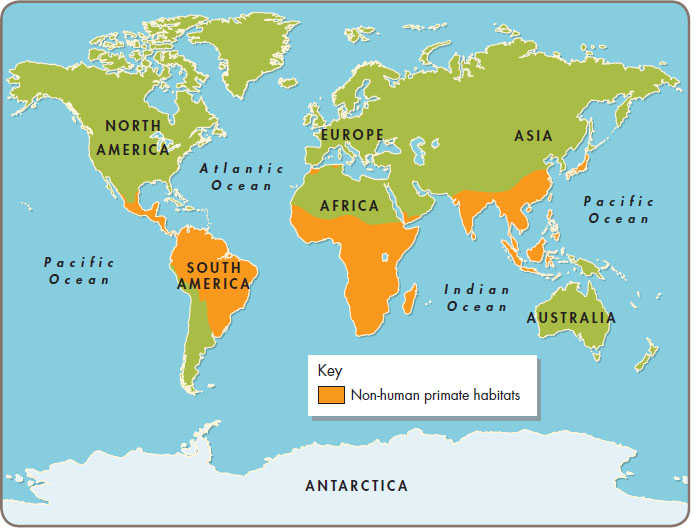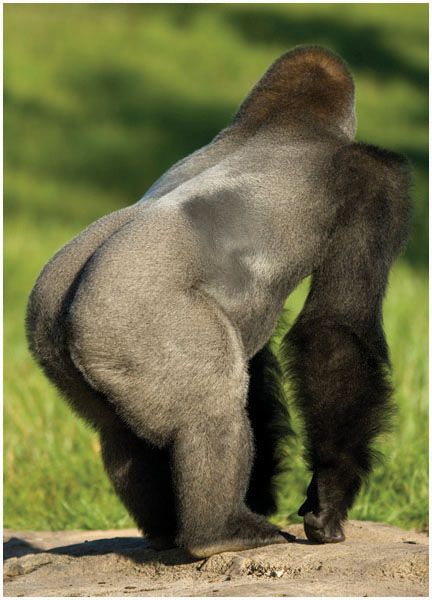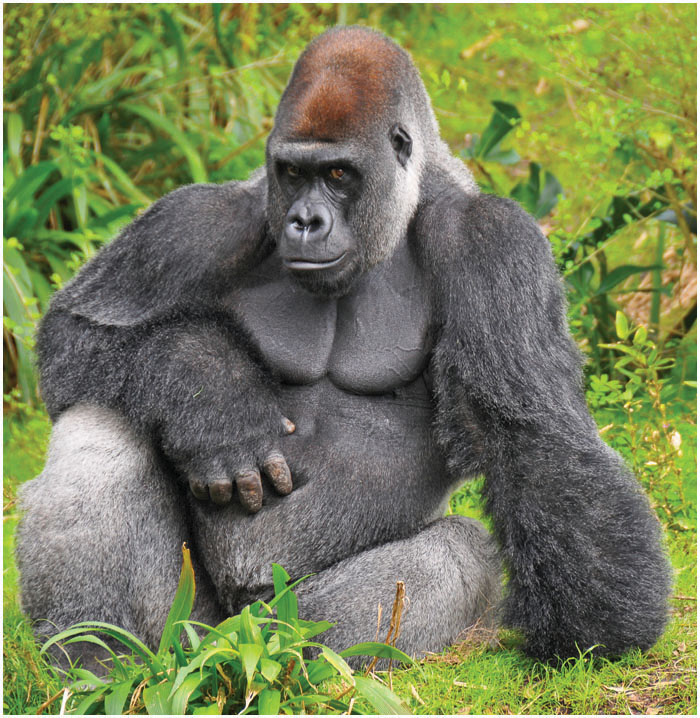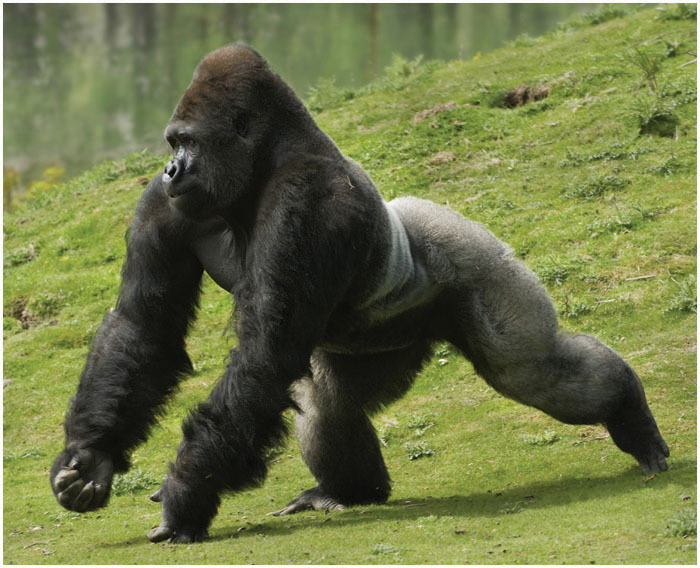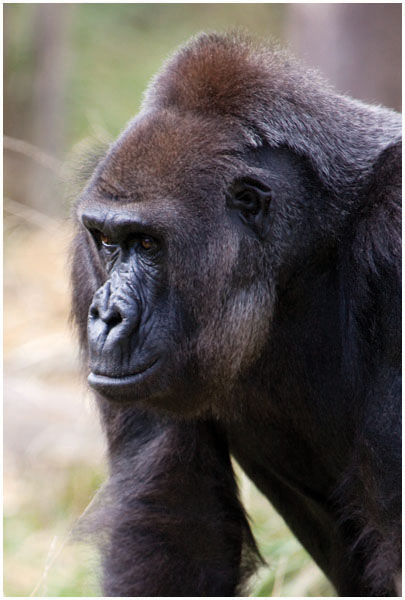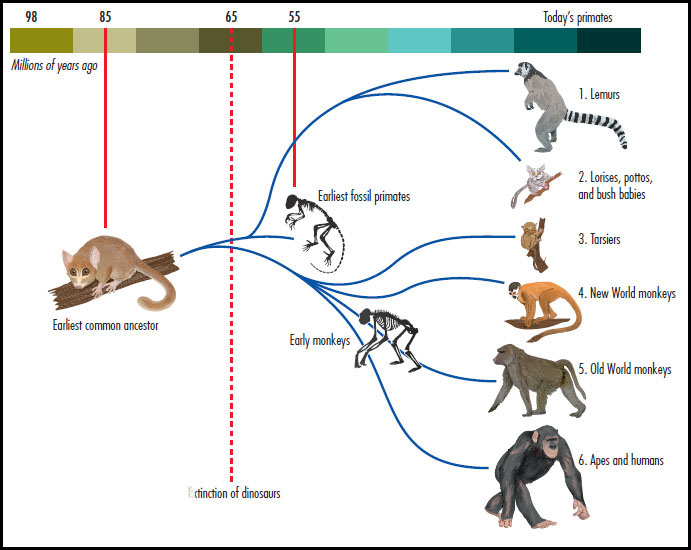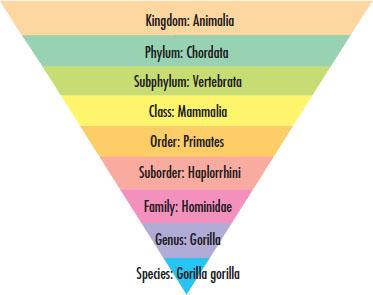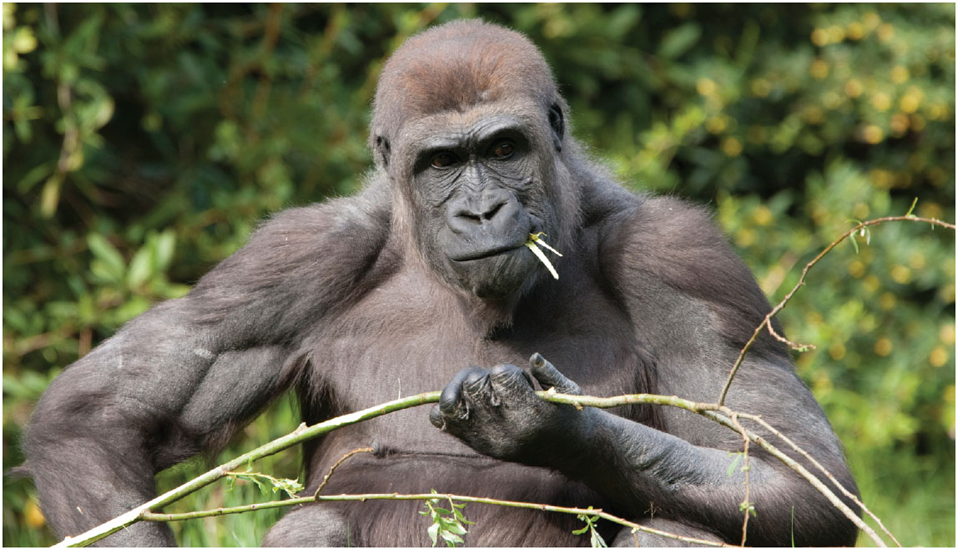Out of the bushes roll a group of youngsters playing follow the leader. Several adultsrelax nearby. Is this a playground in a park? No, it is a forest in Africa, whereyoung gorillas play while their mothers watch.
Gorillas belong to a special group of animals called primates. Monkeys, lemurs, orangutans,and humans belong to this group. Primates are mammals that share six key characteristics:
Like all primates, orangutans have hands that allow them to grip branches.
All primates, except for humans, are currently endangered . These special animalsmaysoondisappear completely if they are not protected.
This map shows where in the world non-human primates live.
What Are Gorillas?
Gorillas are the largest and heaviest primate. They are part of a group called apes,which also includes chimpanzees, orangutans, bonobos, gibbons, and humans. All apeshave a large body size and weight. They have broad chests and long arms. Apes havebig brains, and they do not have tails. Gorillas share similarities with other apes,yet their specific size, shape, and color set them apart.
Like all apes, this gorilla does not have a tail outside its body.
Size and shape
Gorillas are the largest apes on Earth. Males are always bigger than females. Whenstandingupright, gorillas are about 5 inches (13 centimeters) shorter than averagethanaveragehuman adults. Although some male gorillas grow as heavy as 550 pounds (250kilograms),most males weigh between 300 and 440 pounds (135 and 200 kilograms).Femalesweigh between about 150 and 200 pounds (70 and 90 kilograms).
A gorillas shape is unusual among non-human apes. Its stomach is larger than itschest!This huge belly is due to the size of a gorillas intestines, the stretchytubeattached to the stomach that absorbs nutrients from food. A gorillas smallintestinewould be nearly 33 feet (10 meters) long if it were stretched out straight!
Gorillas arms are much longer than their legs. They also havebigger musclesintheir arms. Gorillas use their powerful arms for walking and finding food. Theyalmostalways walk on their hands and feet, even though they can stand upontheirlegs.
A gorillas belly is even larger than its wide, powerful chest.
Hair and skin
Gorillas have dark black to brown-gray hair. This hair can be long and silky or shortand thin, depending on where the gorillas live. As male gorillas age, the hair ontheir backs and upper thighs turns silvery-gray. Because of this change in color,adult males are sometimes called silverbacks.
Under a gorillas dark hair, the skin is also dark. Sometimes baby gorillas are bornwith patches of lighter skin that turn dark with age. Gorillas have skin withouthair on the soles of their feet, palms of their hands, fingers, nose, lips, ears,and chest.
Gorillas have especially tough skin on their fingers. They use their knuckles forwalking, and the thick skin protects them from injury. Gorillas, chimpanzees, andbonobos are the only animals to get around by knuckle-walking.
Gorillas can move very fast when they knuckle-walk.
A big head
Gorillas have large heads. The back part of the head is higher than the front. Thisbony area, called the sagittal crest, supports the strong muscles needed to chewraw plants. A gorillas large forehead protects its small eyes.
Another obvious feature on a gorillas face is its wide, flat nose. Its nostrilsare large. Although gorillas have a good sense of smell, they rely more on theireyesight than their sense of smell.
NOSEPRINTS
Scientists can tell gorillas apart by looking at their noses. Each gorillas noseis unique, like a fingerprint.
Here you can see a gorillas wide, flat nose, its large forehead, and the sagittalcrest on the back of the head.
How Are Gorillas Classified?
Scientists classify gorillas into two main groups based on their similarities.
Classification of living things
All animals share basic characteristics. For example, they all eat food to get energy.However, some animals are more closely related than others.
Scientists usually divide living things into seven levels of classification: kingdom,phylum, class, order, family, genus, and species . These can be divided even furtherforexample, into suborder and family.
This diagram shows how primates have evolved into different groups.
Classification of gorillas
Scientists once believed that all gorillas were similar enough to be classified asone species. However, gorillas in western Africa are smaller and have shorter hairthan other gorillas. Eastern gorillas grow larger and have darker hair. In 2001 scientistsclassified gorillas into two species: the western gorilla and the eastern gorilla.These two species can be divided into even smaller groups, called subspecieswesternlowland gorilla, (western) Cross River gorilla, eastern lowland gorilla, and (eastern)mountain gorilla.
This diagram shows how the western lowland gorilla (below) is classified.
Where Do Gorillas Live?
Gorillas live in tropical and subtropical forests in Africa. Some of the forestsare in the mountains, and some cover areas of low, wet land. Gorillas live in these habitats because of the plants, trees, and rain.




